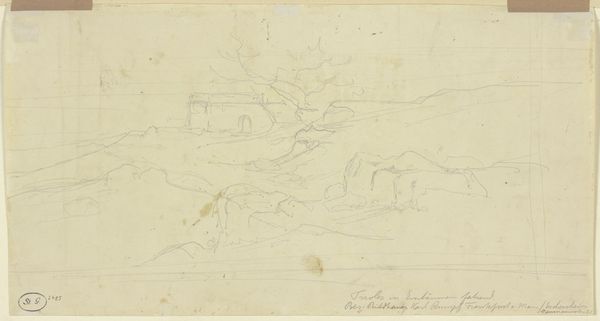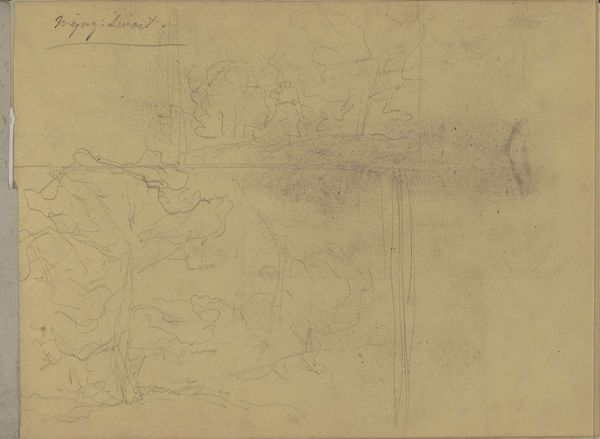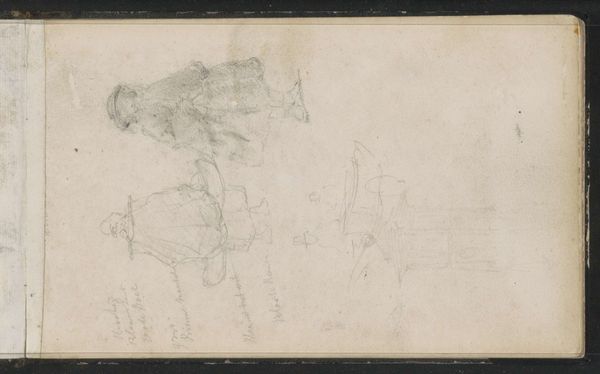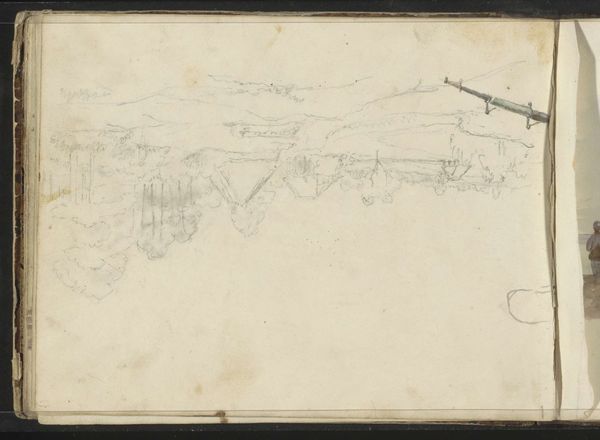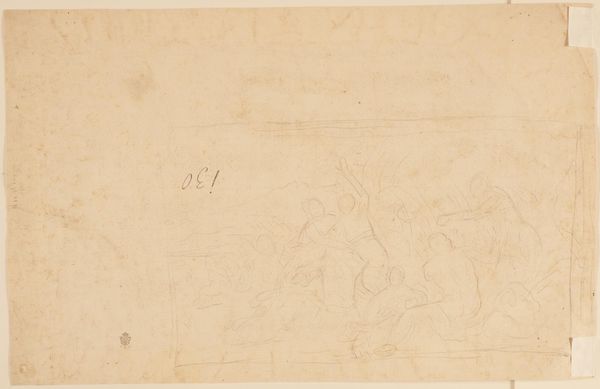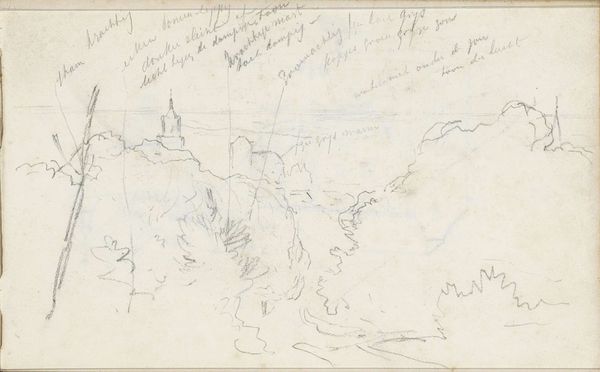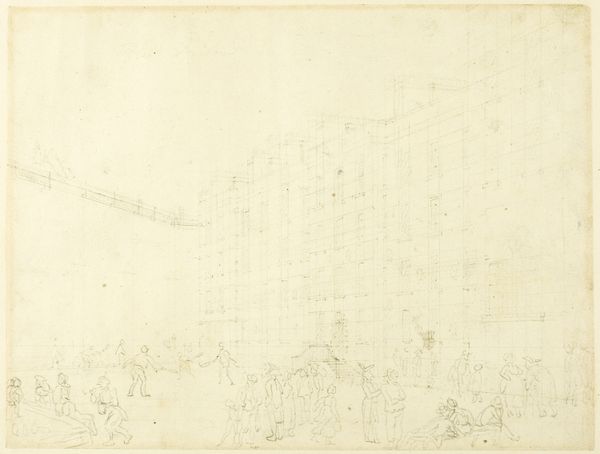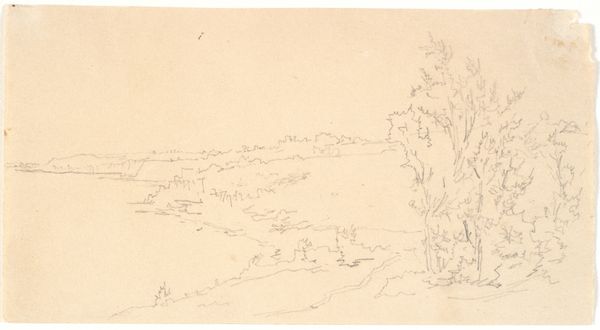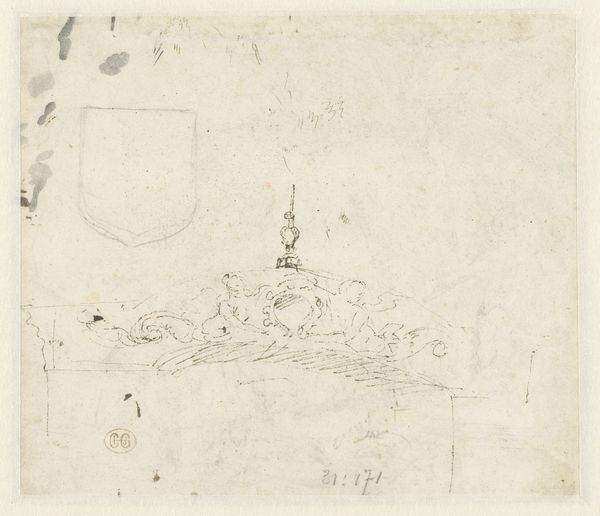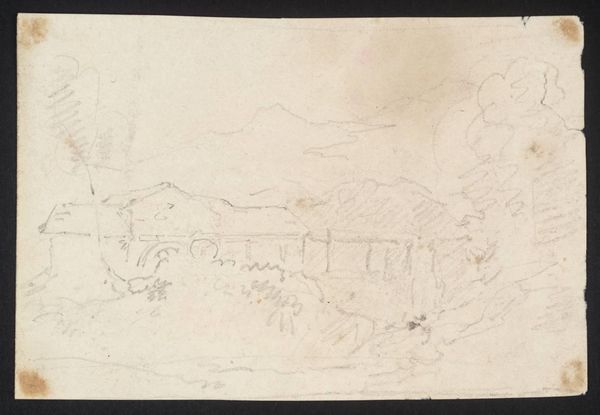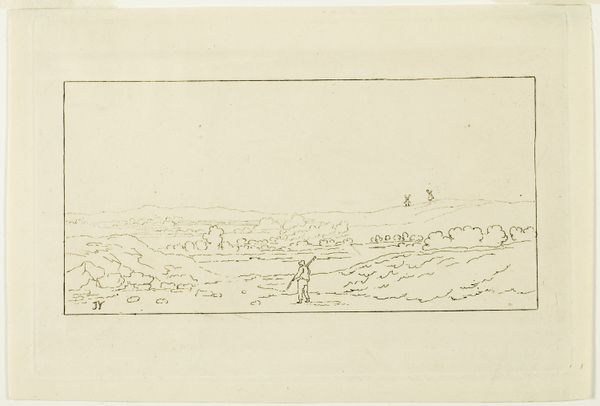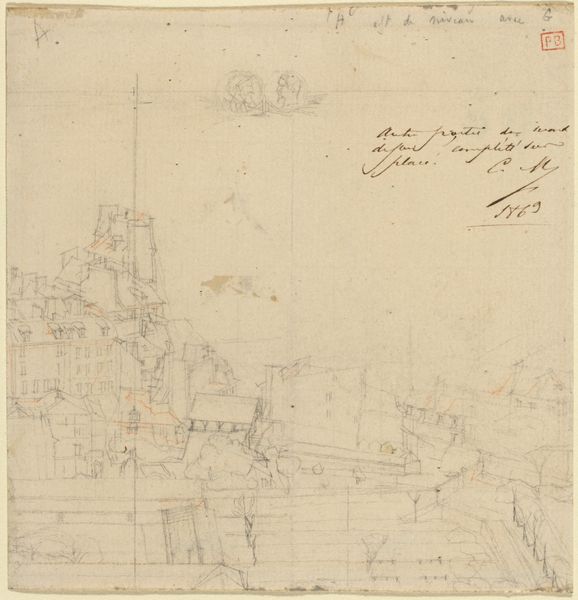
drawing, print, pencil, graphite
#
drawing
# print
#
landscape
#
sketchwork
#
romanticism
#
pencil
#
line
#
graphite
Dimensions: 69 × 144 mm
Copyright: Public Domain
Curator: Standing before us is John Sell Cotman's "Sketch of Landscape with Cathedral," a graphite drawing, now part of the Art Institute of Chicago's collection. Its precise date is unknown, adding a layer of intrigue to its historical placement. Editor: Intrigued is an understatement. It looks like a barely-there daydream captured in pencil. A ghost of a landscape with a cathedral trying to materialize. Curator: Indeed. It's a fantastic example of romantic-era landscape drawing, very typical of Cotman’s interest. The architectural forms rendered so lightly, almost dissolving into the atmosphere, speaks volumes about the period’s aesthetic preferences. Editor: It makes me wonder about the state of mind of the artist. Like they are recording not what is but what might disappear any moment. Is this anxiety about loss? I am also picking up a strange sense of serenity and pensiveness. Is that the cathedral itself imbuing the space? Curator: The sketch aligns with the Romantic movement's focus on feeling and subjectivity over objective accuracy. The cathedral's presence anchors the ethereal, more ambiguous surroundings. It gives a focal point, yet one diminished by Cotman's soft lines and grey tones, that might reflect societal perspectives towards established institutions, perhaps their reduced power during this time. Editor: Reduction! That is just perfect. There is no sense of monumentality, only intimacy here. And the little scrawled notes above, near each spire – are those names? Or annotations, some coded reminder of perspective and light, quickly sketched to contain this place and time, so that this feeling and image doesn't completely dissipate? Curator: They're fascinating to consider, aren't they? From a socio-historical viewpoint, this drawing highlights the Romantics' interest in Medieval architecture—seen often as symbolic of a pre-industrial, more spiritual time. It definitely shows how artists of this time sought to reconstruct their society through idyllic depictions. Editor: So, in a way, the very lightness of the lines isn't weakness, but an opening – a pathway for feeling, for memory, to complete the cathedral not just as stone and spire, but as a vessel of shared stories. It almost feels as though we, as viewers, are invited to be the architects. Curator: An inspired thought. Cotman's sketch succeeds in inviting speculation, prompting questions about our perception of history and our relationship with established power, religious and secular, allowing different readings for different audiences over time. Editor: A truly subtle rebellion, cloaked in grey. Thanks for lending your keen insights to it.
Comments
No comments
Be the first to comment and join the conversation on the ultimate creative platform.
